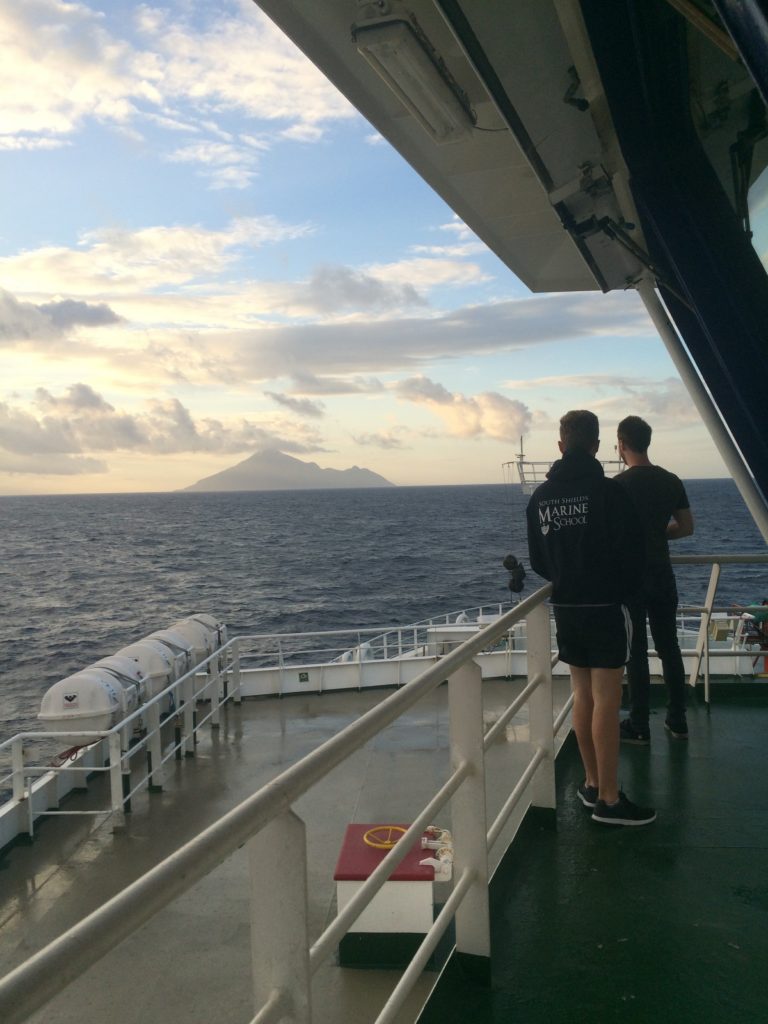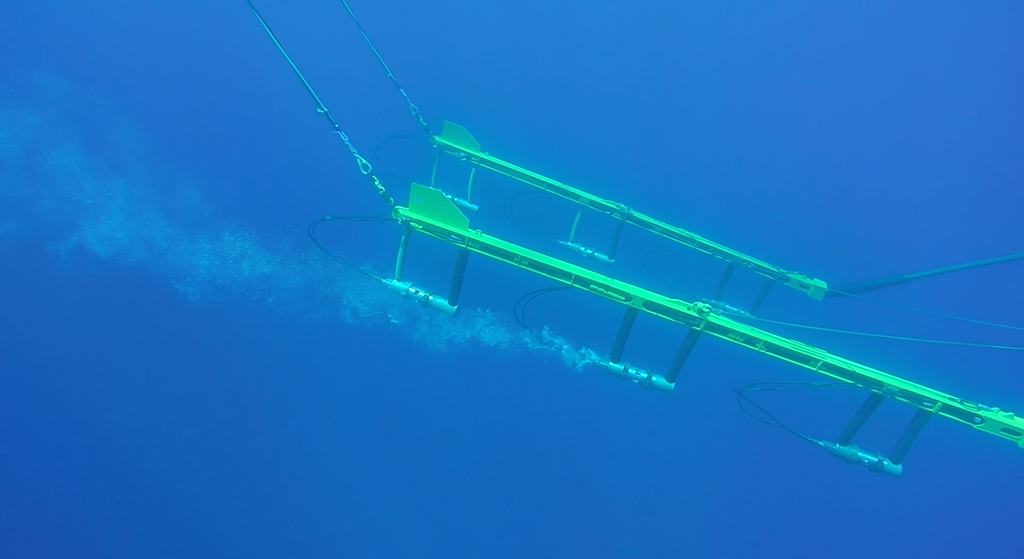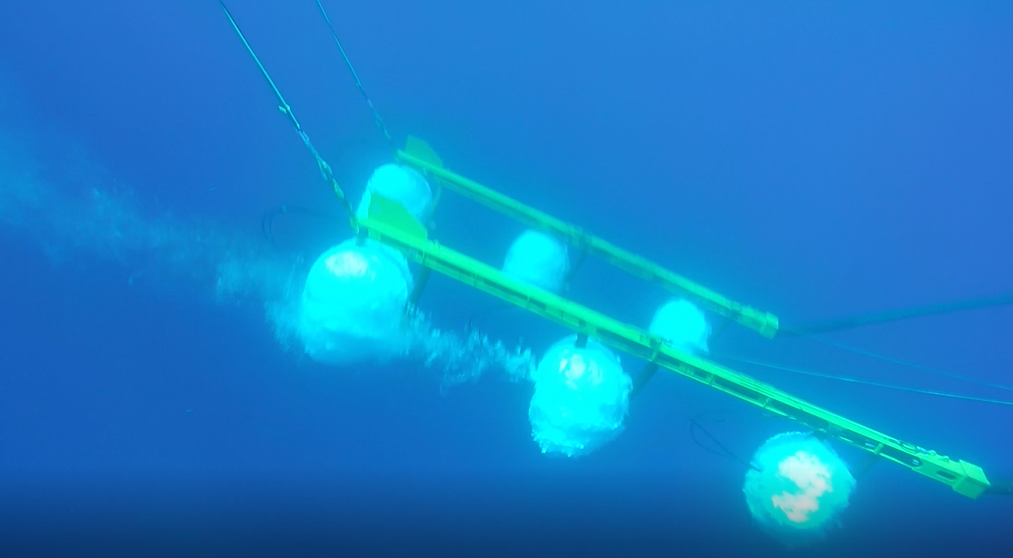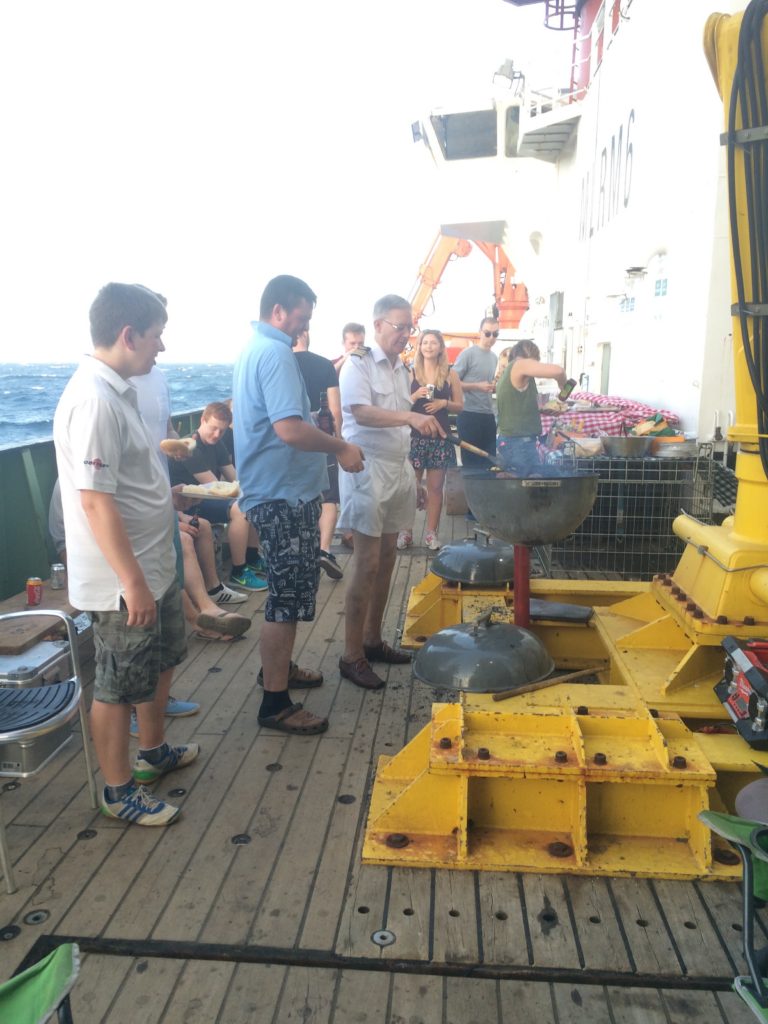Seismically Active
Robert Allen
It’s not often you get to say that you have visited 10 countries in 4 days but that is exactly what we’ve done. If by visited, you mean sailed through their waters and waved at the islands as they go by. And if by waved you mean shot 4800cuin of pressurised gas into the water column every 60 seconds (except obviously in Guadeloupe and Martinique where such behaviour is frowned upon).

But that’s right, in the last 4 days the James Cook has sailed the entire length of the Lesser Antilles shooting seismic as we go. Since Monday we have passed through Saba, Saint Eustatius, St. Kitts and Nevis, Antigua and Barbuda, Montserrat, Guadeloupe, Dominica, Martinique, St. Lucia, St. Vincent and the Grenadines and, last but not least, Grenada. These seismic shots, which are being recorded on OBS and land seismometers all over the Antilles will provide the perfect data set for us to analyse the structure of the island arc and the variations in the crust along it.
Using a highly technical piece of equipment (GoPros on a stick), we’ve even managed to observe the guns from underwater as they fire in real time (although sadly one of the cameras did pay the ultimate price in the name of science). This has allowed the techs to make note of any possible issues with the equipment while it’s still underwater, while the students have thought long and hard about how cool the bubbles look (to see the bubbles in all their glory and check out the video for yourself please join us on twitter: VoiLA_NERC.


The air-gun array has been, by and large, performing very well. Apart from one dodgy depth sensor and a slightly leaky coupling on one of the guns we otherwise have a clean bill of health and will finish the North to South shoot almost exactly on schedule. Finishing so close to time gives the technicians a good opportunity to pull in some of the gear, make the necessary fixes and deploy the instruments again (not to mention whipping up a quick bbq on the back deck) before we turn the boat around and head North again. The next set of lines will be shot in deeper water to the West and allow us to image the Antilles back-arc region.

The sight of the islands so close by has brought a welcome change to the endless expanse of sea that we experienced for the first week. We have also observed many of the volcanos that form a key part of the VoiLA project’s broader research programme first hand (such as la Soufrière volcano on Guadeloupe, and la Soufrière, St. Lucia also la Soufrière on St. Vincent and not forgetting the originally named Soufrière Hills volcano, Montserrat).

In another shocking plot twist the marine mammal observation team have actually observed some marine mammals, with both dolphins and pilot whales sighted (please note: no animals were harmed in the making of this seismic survey).
Meanwhile in ship news: The value of bananas has sky rocketed as fresh fruit shortage begins to bite. Public services desperately in need of funding as investigation finds pool is just old life raft with top cut off. Staying indoors and watching sub-bottom profiler for 8 hours a day may be bad for health warn experts.